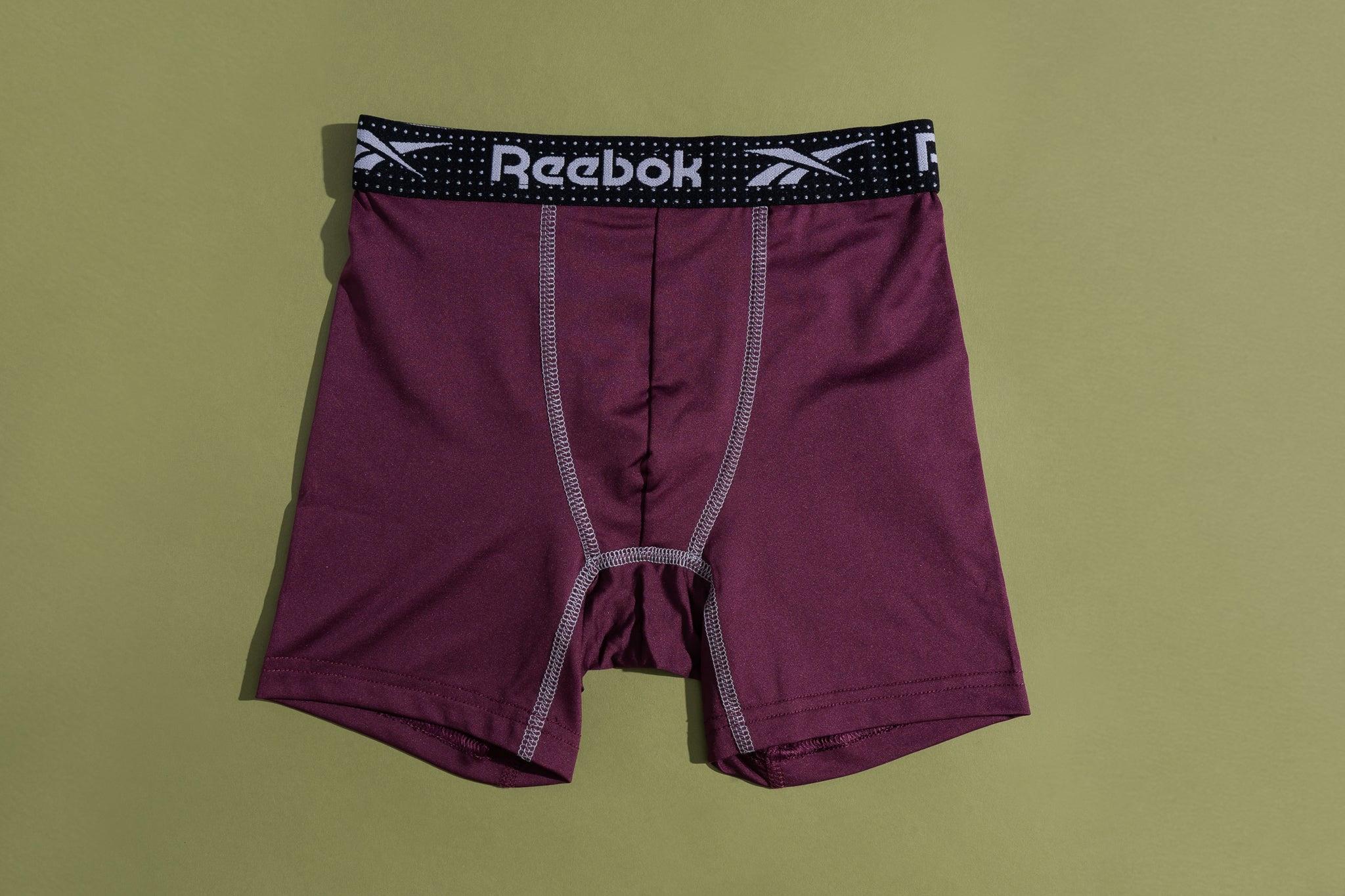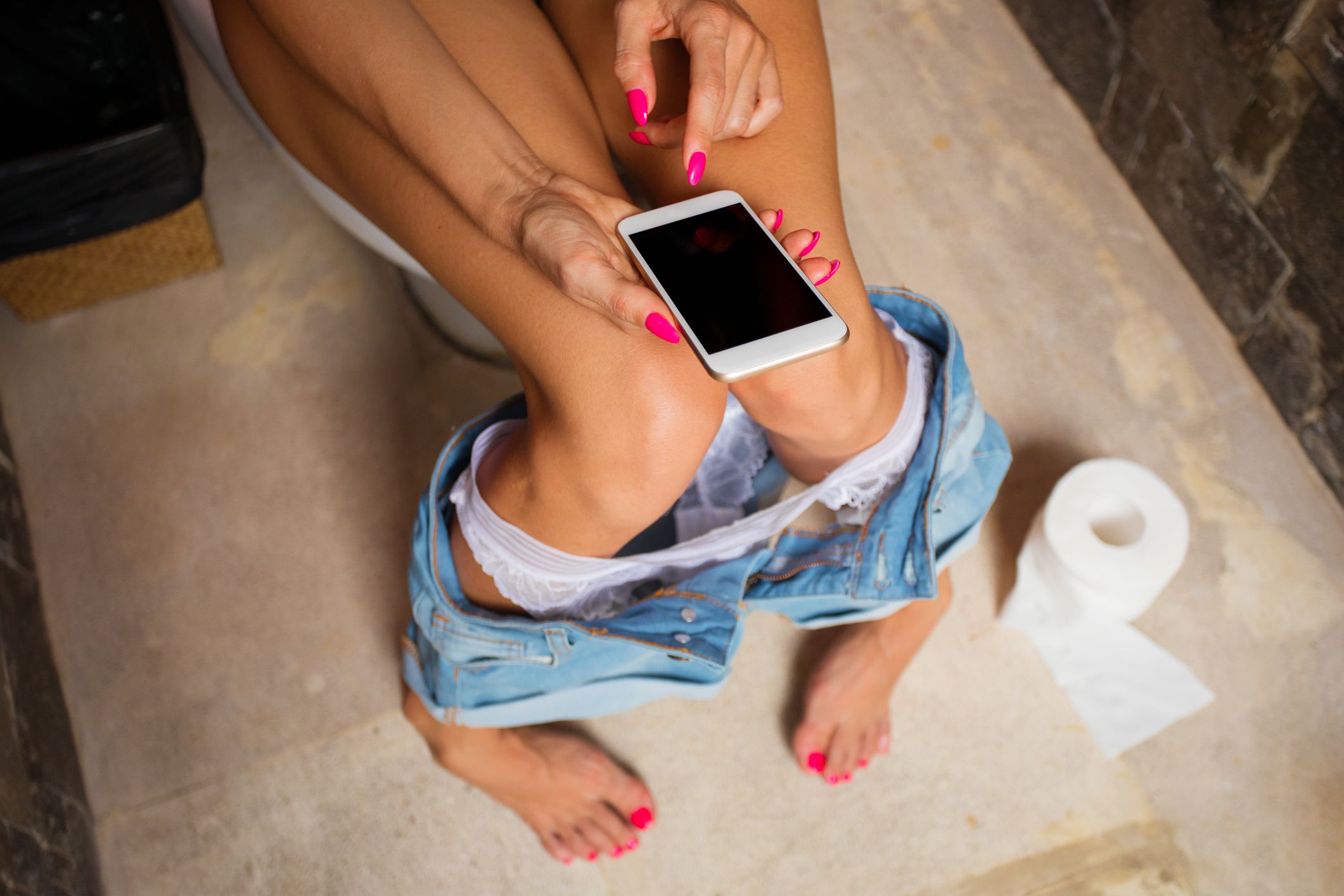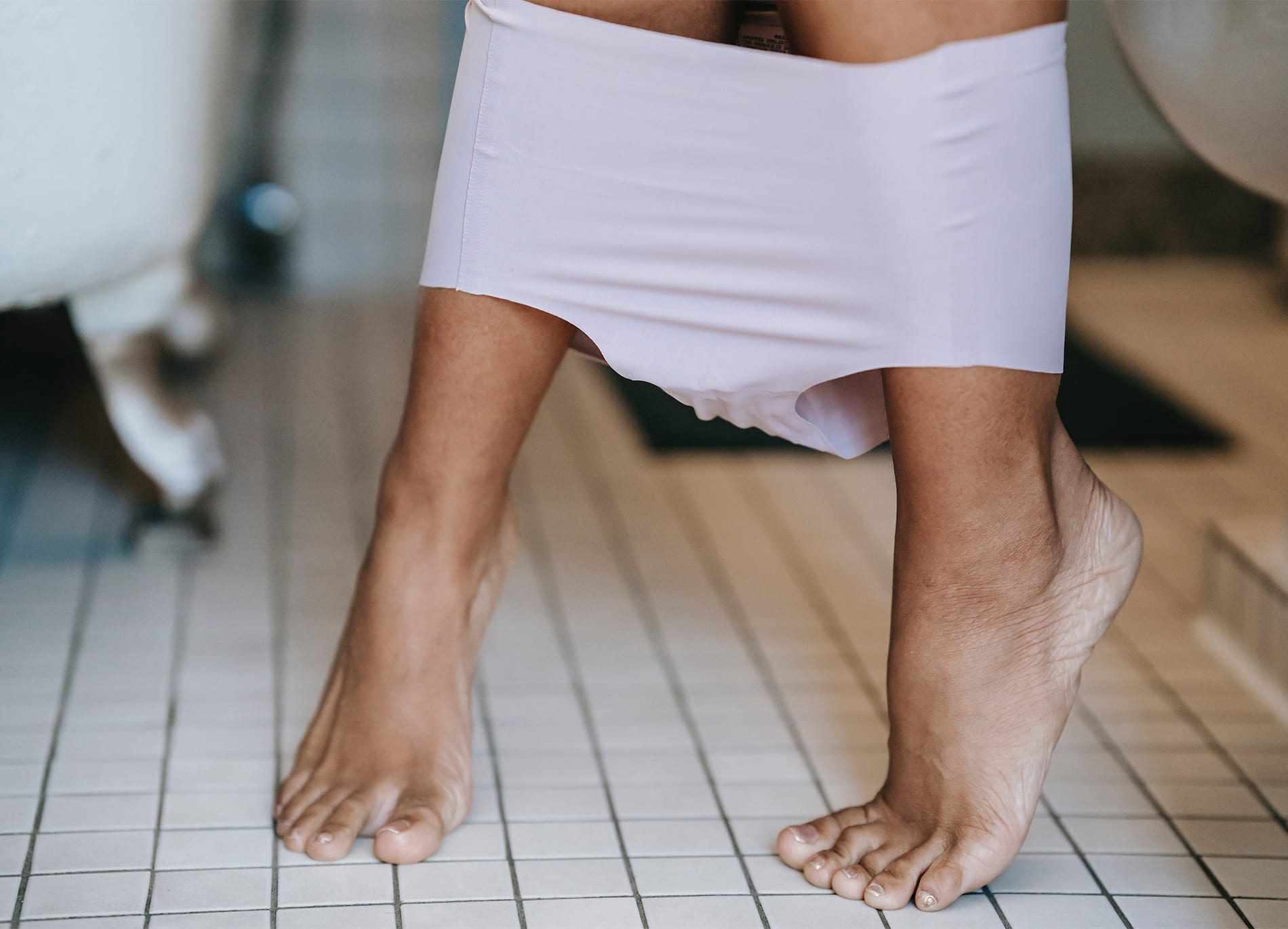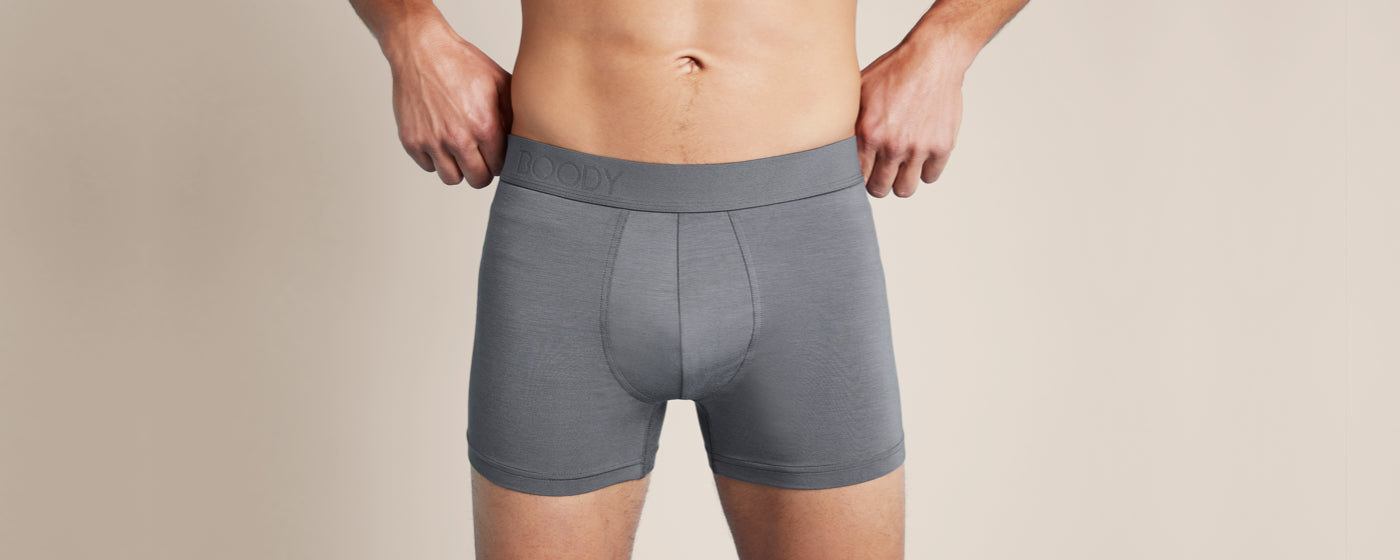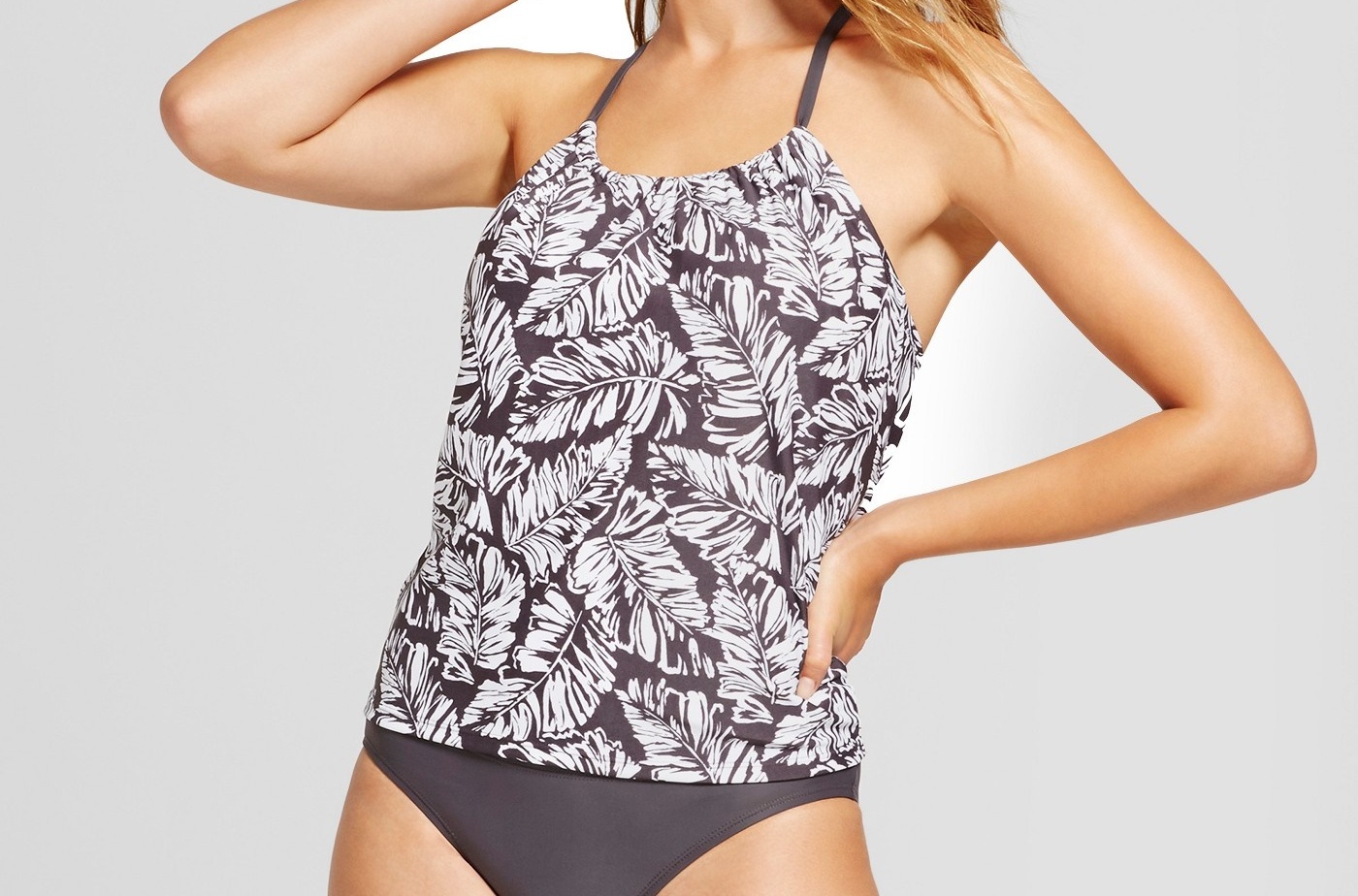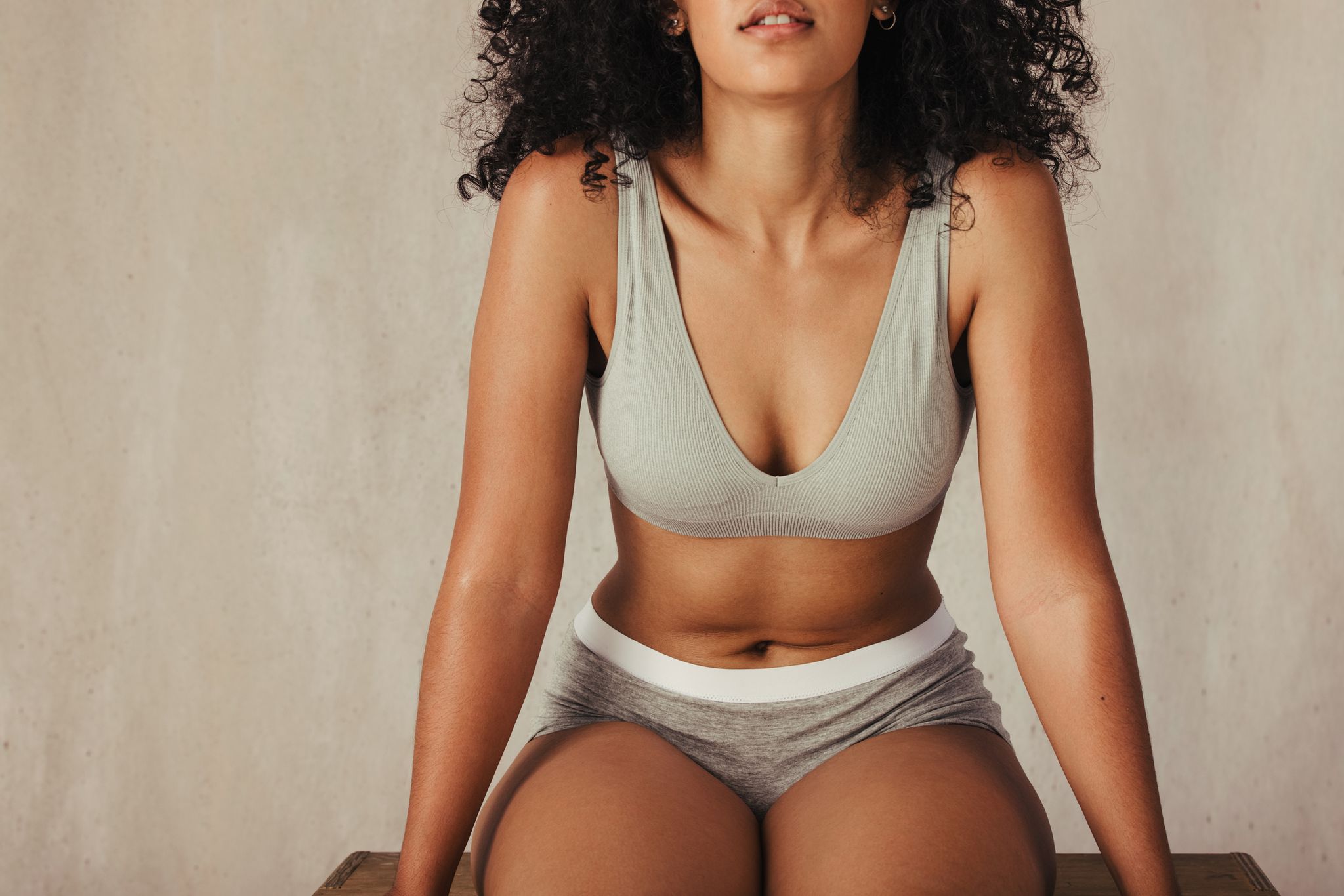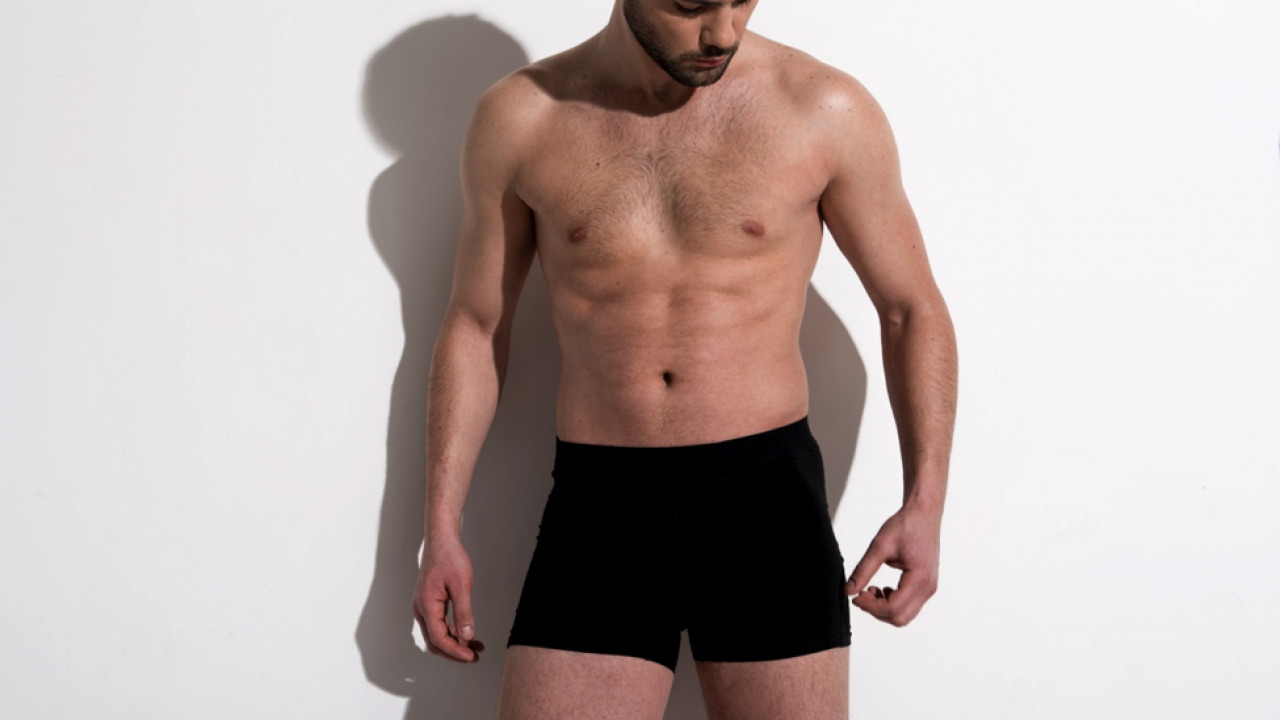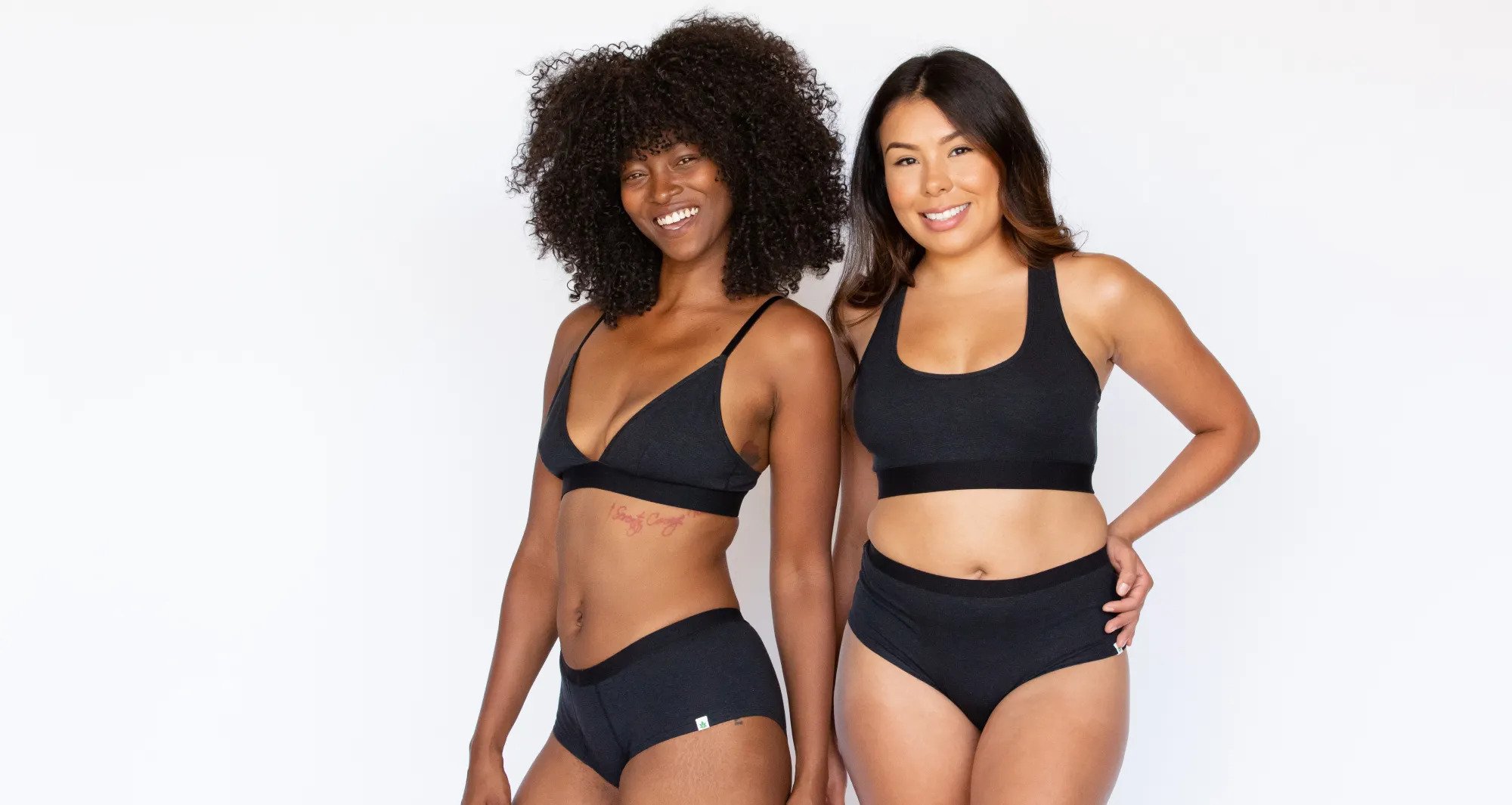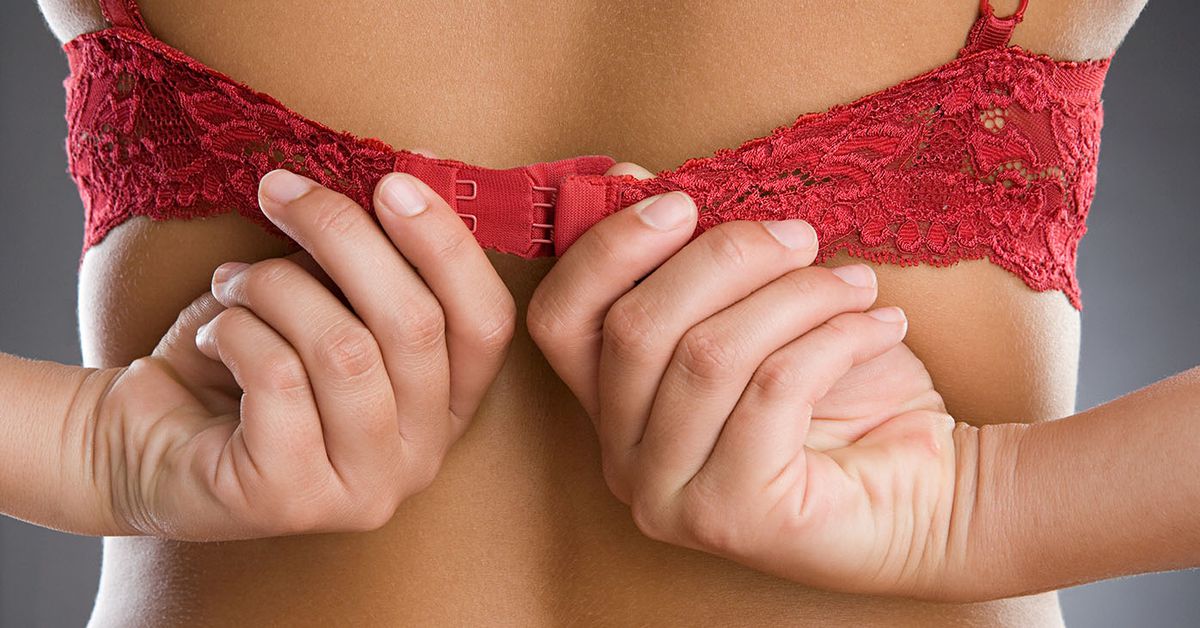Home>Women's Underwear>Bras>Why Do My Bra Straps Fall Down
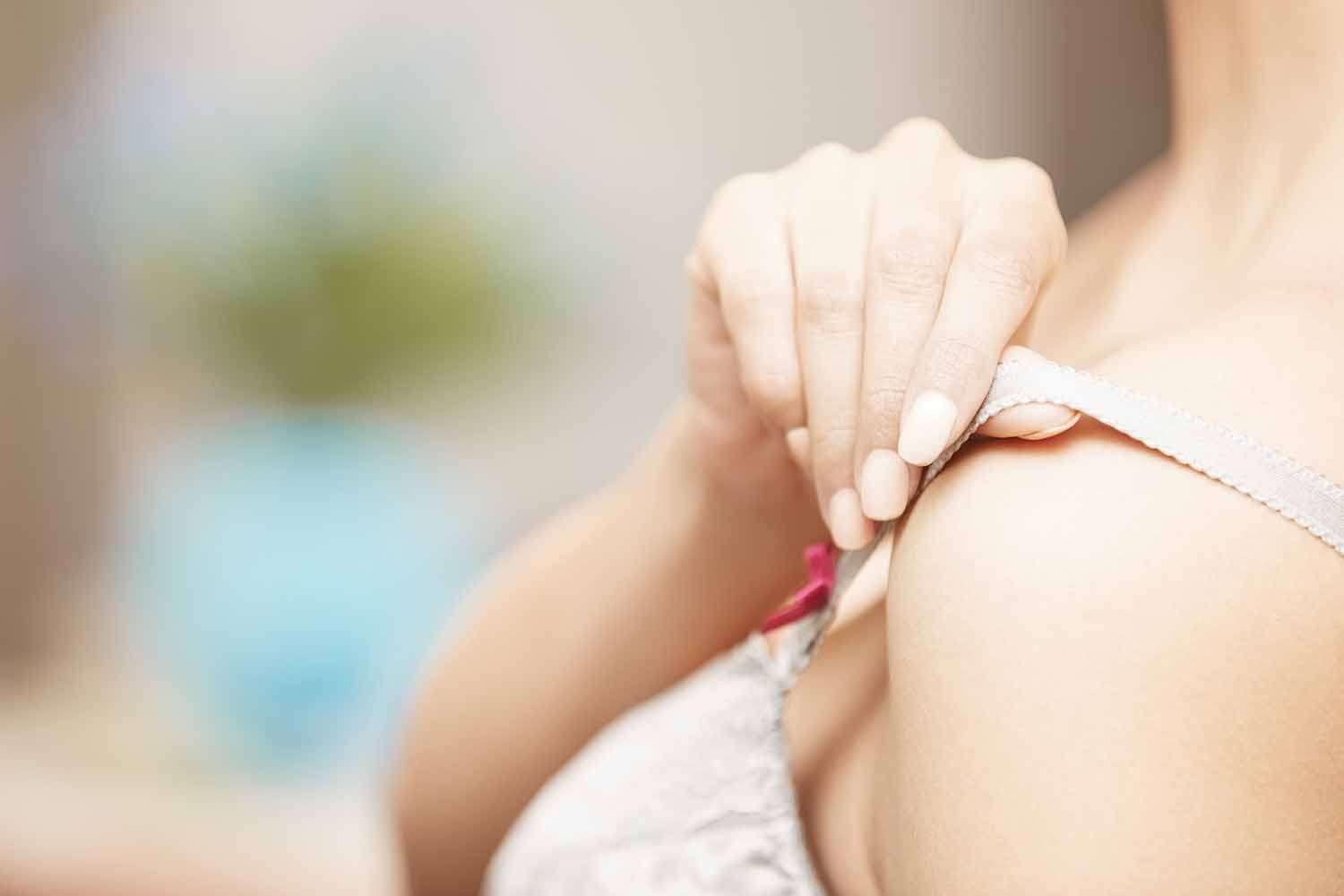

Bras
Why Do My Bra Straps Fall Down
Modified: August 5, 2023
Discover the reasons why your bra straps keep falling down and learn how to prevent it. Our expert tips and advice will help you find the perfect bras for ultimate comfort and support.
(Many of the links in this article redirect to a specific reviewed product. Your purchase of these products through affiliate links helps to generate commission for Under-tec.com, at no extra cost. Learn more)
Table of Contents
- Introduction
- Understanding the Anatomy of Bra Straps
- Common Reasons for Bra Strap Slippage
- Incorrect Strap Length
- Stretchy or Worn-out Straps
- Incorrect Bra Size
- Sloping Shoulders
- Heavy or Ill-fitting Bras
- Ways to Prevent Bra Strap Slippage
- Adjusting Strap Length
- Using Strap Holders or Clips
- Trying Different Bra Styles and Designs
- Using Silicone Bra Strap Cushions or Pads
- Seeking Professional Bra Fitting Advice
- Conclusion
Introduction
Have you ever experienced the frustration of your bra straps constantly slipping down your shoulders? It’s not only uncomfortable but also gives an unkempt and unflattering appearance. If you’re tired of constantly readjusting your bra straps throughout the day, you’re not alone.
Understanding why bra straps fall down is the first step in finding a solution. At first glance, it may seem like a minor annoyance, but it can be indicative of a larger problem with your bra’s fit or design. In this article, we will delve into the common reasons behind bra strap slippage and provide you with tips on how to prevent it.
To understand why bra straps tend to slide off, we need to take a closer look at their anatomy. Bra straps are usually made of adjustable elastic and are attached to the cups and back band of the bra. Their main purpose is to provide support and lift to the breasts while keeping the bra in place. However, different factors can cause them to lose their grip and slip down your shoulders.
In the following sections, we will explore some of the most common reasons for bra strap slippage and provide practical solutions to help you fix this issue. From adjusting the strap length to trying different bra styles and designs, we will cover all the possible remedies to ensure a more comfortable and secure fit.
Understanding the Anatomy of Bra Straps
Before we dive into the reasons behind bra strap slippage, let’s take a moment to understand the anatomy of bra straps. Although they may seem like simple bands of elastic, there is more to them than meets the eye.
Bra straps are typically made of adjustable elastic material that can be lengthened or shortened to suit your comfort and support needs. They are attached to the cups and back band of the bra, creating a supportive and secure structure. The straps play a crucial role in distributing the weight of the breasts evenly and preventing sagging.
The adjustability of bra straps is essential because it allows individuals to customize the fit according to their body shape and size. However, it’s important to note that the elasticity of the straps can deteriorate over time, especially if the bra is improperly cared for or worn frequently.
In addition to the length and elasticity, the width of the straps also plays a significant role in the overall support and comfort provided. Wider straps generally offer more stability and are ideal for individuals with larger breasts or those who require extra support. On the other hand, narrower straps are often found on bras with smaller cup sizes or delicate designs.
Some bras also feature convertible straps that can be adjusted to different configurations, such as halter neck, cross-back, or one-shoulder styles. These versatile options allow for greater flexibility and can be particularly useful for individuals who want to wear certain outfits or dresses with unconventional necklines.
Now that we have a better understanding of the structure and functionality of bra straps, let’s explore the common issues that may cause them to slip down your shoulders and how you can effectively address these problems.
Common Reasons for Bra Strap Slippage
Bra strap slippage can be caused by a variety of factors. Understanding these common reasons can help you pinpoint the issue and find the appropriate solution. Here are some of the most frequent culprits:
- Incorrect Strap Length: If your bra straps are too loose or too tight, they are more likely to slip off your shoulders. Straps that are too loose won’t provide enough support, while straps that are too tight can dig into your skin and cause discomfort.
- Stretchy or Worn-out Straps: Over time, the elasticity of bra straps can weaken, leading to slippage. If your bra has worn-out or overly stretchy straps, they may not be able to hold the weight of your breasts effectively.
- Incorrect Bra Size: Wearing the wrong bra size can contribute to strap slippage. If your bra cups are too small, it can pull the straps inward and cause them to slide down. Conversely, if the cups are too big, it can create extra weight that pushes the straps off your shoulders.
- Sloping Shoulders: Some individuals naturally have sloping shoulders, which can make it more challenging for bra straps to stay in place. The straps may slip down due to the slope of the shoulders and require additional adjustments or specific bra styles that cater to this body shape.
- Heavy or Ill-fitting Bras: Bras with heavy padding, thick fabric, or excessive embellishments can increase the likelihood of strap slippage. Additionally, if the bra itself is ill-fitting or doesn’t provide adequate support, it can put extra strain on the straps and cause them to fall down.
By identifying the specific reason behind your bra strap slippage, you can take the necessary steps to correct the issue and enjoy a more comfortable fit. In the following sections, we will explore various methods and solutions to prevent bra strap slippage and find the right fit for your needs.
Incorrect Strap Length
One of the primary causes of bra strap slippage is having straps that are either too loose or too tight. The length of your bra straps plays a crucial role in ensuring a secure and comfortable fit. Here’s how incorrect strap length can contribute to slippage:
If your bra straps are too loose, they won’t provide the necessary support to keep your breasts in place. As a result, the straps may slide down your shoulders, causing discomfort and an unsightly appearance. Loose straps can be particularly problematic if you have larger or heavier breasts, as they require more support to maintain proper lift and shape.
On the other hand, if your bra straps are too tight, they can dig into your shoulders and create discomfort or marks on your skin. Tight straps can also pull the cups inward, causing the straps to slip off your shoulders. This is especially common if your bra is too small or if you’re wearing a bra with adjustable straps that are pulled tightly in an attempt to improve support.
So, how can you ensure the correct strap length for your bra? Start by adjusting the straps to a length that feels comfortable and provides adequate support. The straps should sit securely on your shoulders without digging in or sliding off. Take into account that certain activities, such as stretching or bending, may require slightly shorter straps to prevent slippage.
If your bra straps are constantly slipping, try tightening them a little at a time until you find the optimal length. Remember that different bra styles and designs may have slightly different strap lengths, so it’s important to experiment and adjust accordingly.
Once you’ve found the right length, take note of the adjustment position and replicate it on other bras of the same style or brand. It can be helpful to keep track of these adjustments to quickly achieve the perfect fit without having to go through the trial and error process every time you wear a new bra.
In the next section, we will explore additional strategies to prevent bra strap slippage, such as using strap holders or clips.
Stretchy or Worn-out Straps
Over time, the elasticity of bra straps can diminish, leading to slippage and a less secure fit. Stretchy or worn-out straps are a common culprit behind bra strap slippage. Here’s how this issue can arise:
As you wear and wash your bras, the constant stretching and pulling of the straps can cause the elastic fibers to become weaker. When the elasticity is compromised, the straps may no longer have the strength to hold your breasts in place and prevent them from bouncing or shifting. This can result in the straps gradually sliding down your shoulders throughout the day.
If you’ve had your bra for a significant amount of time or if you’ve noticed visible signs of wear and tear on the straps, it may be time to replace it. Look for bras with high-quality materials and sturdy straps that provide optimal support and longevity.
Alternatively, if your bra is relatively new but the straps feel overly stretchy, it’s possible that the bra itself is of poor quality or the straps were not designed to withstand the weight of your breasts. In such cases, you might consider investing in bras with reinforced straps or seeking out brands known for their durable and supportive designs.
Another option to combat the issue of stretchy or worn-out straps is to use strap holders or clips. These small accessories can be attached to the back of your bra straps, pulling them together and preventing them from slipping off your shoulders. Strap holders not only help secure the straps in place but also provide added support and alleviate the strain on your shoulders.
If you prefer a DIY approach, you can also try sewing a small piece of fabric or elastic near the intersection of the straps at the back of your bra. This will create gentle friction and help keep the straps in position throughout the day.
In the following sections, we will explore more ways to prevent bra strap slippage, such as checking for the correct bra size and considering factors like sloping shoulders and heavy bras.
Incorrect Bra Size
One of the most common causes of bra strap slippage is wearing the incorrect bra size. When your bra doesn’t fit properly, it can lead to various issues, including strap slippage. Here’s how an incorrect bra size can contribute to this problem:
If your bra cups are too small, it can cause the breasts to spill out or push against the straps, which can result in the straps slipping down your shoulders. The extra pressure on the straps creates tension and instability, making it difficult for them to stay in place. It’s important to remember that breast size can change over time due to factors such as weight fluctuations, pregnancy, or hormonal changes. Regularly checking and updating your bra size can help prevent strap slippage.
Conversely, if your bra cups are too big, it can create excess space and weight that puts strain on the straps. This added weight can cause the straps to gradually slide down over time, resulting in discomfort and a lack of support. Ensuring that your bra cups fit properly and encase your breasts without any gaps or bulges can help maintain optimal strap placement.
If you suspect that you may be wearing the wrong bra size, it’s recommended to get a professional bra fitting. Many lingerie stores offer complimentary fittings where trained professionals can measure you and help you find the right size and style for your body shape and needs. A properly fitted bra not only prevents strap slippage but also enhances comfort, support, and overall confidence.
Remember that bra sizing can vary between different brands and styles, so it’s important to try on different options and assess how they fit and feel. Don’t be afraid to experiment and explore various sizes until you find the perfect fit that keeps your breasts lifted and supported while keeping the straps firmly in place.
In the next sections, we will continue exploring additional factors that can contribute to bra strap slippage, including sloping shoulders and wearing heavy or ill-fitting bras.
Sloping Shoulders
Individuals with sloping shoulders often face challenges when it comes to bra strap slippage. This body shape can make it more difficult for bra straps to stay in place and can lead to constant adjustments throughout the day. Here’s why sloping shoulders can contribute to strap slippage:
Sloping shoulders refer to a natural shape where the curve of the shoulder slopes downward rather than being straight or squared. This shape can cause the straps to slide off the shoulders since there is less surface area for the straps to grip onto. As a result, individuals with sloping shoulders may experience more frequent strap slippage compared to those with a different shoulder shape.
If you have sloping shoulders, it’s essential to look for bras with certain features that can help address this issue. One option is to choose bras with adjustable or convertible straps that can be crossed at the back. By crossing the straps, you create a more secure fit and prevent them from slipping off your shoulders.
An alternative solution is to opt for bras with wider or padded straps. These types of straps provide more coverage and distribute the weight more evenly, reducing the chances of slippage. Additionally, bras with a racerback design can be a great choice as they naturally pull the straps closer to the center of your back, helping to keep them in place.
It’s worth mentioning that the correct strap length is crucial when dealing with sloping shoulders. Adjusting the straps to a slightly shorter length can help compensate for the slope and provide a more secure fit. However, be cautious not to make the straps too tight, as this can cause discomfort and create additional pressure on the shoulders.
If you continue to experience strap slippage despite these adjustments, you may consider seeking professional bra fitting advice. Lingerie experts can assist in finding bras that are specifically designed to cater to different body shapes and provide solutions for individuals with sloping shoulders.
In the next sections, we will explore other factors that can contribute to bra strap slippage, such as wearing heavy or ill-fitting bras, and we’ll provide additional strategies to prevent this issue.
Heavy or Ill-fitting Bras
Heavy or ill-fitting bras can significantly contribute to bra strap slippage. The weight and fit of a bra play a crucial role in ensuring that the straps stay in place throughout the day. Here’s how these factors can impact strap slippage:
Bras with excessive padding, thick fabric, or heavy embellishments can add extra weight to the bra, which can pull the straps down and cause them to slip off the shoulders. The additional weight puts strain on the straps and reduces their ability to grip onto the shoulders effectively.
It’s important to select bras that are suitable for your breast size and shape. Ill-fitting bras, whether they are too big or too small, can contribute to strap slippage. If the cups are too small, it can force the straps inward, making them more prone to slipping. Conversely, if the cups are too big, they can create additional weight that pulls the straps down.
Wearing a bra that doesn’t offer adequate support can also lead to strap slippage. When the bra doesn’t lift and support the breasts properly, it can cause them to shift and put strain on the straps. This issue is especially common in bras that have worn out or stretched elastic, as they no longer provide the necessary support.
To prevent strap slippage caused by heavy or ill-fitting bras, it’s important to regularly assess your bra collection and ensure that each one offers the right support and fit. Consider opting for bras with reinforced or adjustable straps to provide additional support and stability.
If you have a heavy bust, it may be beneficial to look for bras with wide, cushioned, or adjustable straps. These features distribute the weight more evenly and help keep the straps in place. Additionally, bras with underwire or side boning can further enhance support and prevent strap slippage.
Regularly getting professionally fitted for bras can also help ensure that you are wearing the correct size. Bra sizes can change over time, so it’s essential to re-evaluate and update your size as needed. Professional bra fittings can provide valuable insight into your unique shape and help you find bras that offer optimal support and comfort.
In the next sections, we will explore various strategies and techniques to prevent bra strap slippage, including adjusting strap length, using strap holders or clips, trying different bra styles, and using silicone bra strap cushions or pads.
Ways to Prevent Bra Strap Slippage
Bra strap slippage can be a persistent and frustrating issue, but there are several effective methods to prevent it. By implementing the following strategies, you can ensure a more secure and comfortable fit:
Adjusting Strap Length: Proper strap length is crucial for preventing slippage. Experiment with different lengths and find the one that keeps the straps snugly on your shoulders without digging in or pulling too tight.
Using Strap Holders or Clips: Strap holders or clips can be attached to the back of the bra straps, pulling them together and preventing them from slipping off the shoulders. These accessories provide added support and stability.
Trying Different Bra Styles and Designs: Certain bra styles and designs are specifically created to address strap slippage. Look for bras with adjustable or convertible straps, racerback designs, or wider straps that provide better grip and support.
Using Silicone Bra Strap Cushions or Pads: Silicone bra strap cushions or pads can be placed under the bra straps to provide additional friction and grip, helping to keep the straps in place. These cushions can be particularly useful for individuals with sloping shoulders or those wearing bras with thin or slippery straps.
Seeking Professional Bra Fitting Advice: Getting professionally fitted for bras can make a significant difference in preventing strap slippage. Lingerie experts can measure you properly and recommend bras that are specifically suited to your body shape and needs.
It’s important to note that individual preferences and body shapes vary, so it may take some trial and error to find the best solution for you. Don’t be discouraged if one method doesn’t work immediately; keep experimenting until you find what works best for your unique needs.
Remember to regularly assess the condition of your bras. Replace worn-out bras with stretched-out straps, as they may no longer provide the necessary support to keep the straps in place. Additionally, consider rotating your bras to prevent excessive wear and maintain their shape and elasticity.
By implementing these strategies and taking the time to find the right fit and support, you can significantly reduce or eliminate bra strap slippage. Enjoy the comfort, confidence, and peace of mind that comes with a properly fitting bra.
Adjusting Strap Length
One of the simplest and most effective ways to prevent bra strap slippage is by adjusting the strap length to achieve the perfect fit. Properly adjusted straps will help keep your bra in place and provide the necessary support for your breasts. Here’s how you can adjust the strap length to prevent slippage:
Start by loosening or tightening the bra straps to a length that feels comfortable and supportive. The straps should rest securely on your shoulders without slipping or digging into your skin. An easy way to check if the straps are the right length is to move your arms and shoulders in various positions; if the straps stay in place throughout, then they are adjusted correctly.
If your bra straps are constantly slipping down even after adjusting them, they may be too loose. In this case, try tightening them gradually until you achieve a more secure fit. However, be careful not to make them too tight, as this can cause discomfort and restrict movement.
On the other hand, if the straps are too tight and digging into your shoulders, they can not only cause discomfort but also create an unflattering appearance. Loosening them slightly will alleviate the pressure and give you a more comfortable fit.
It is important to note that the correct length of the bra straps may vary depending on factors such as the style and design of the bra, as well as your own body shape and size. Some bras may have longer or shorter straps, so it’s essential to make adjustments accordingly for each bra you wear.
Once you find the right strap length for one bra, remember to replicate that adjustment for other bras of the same style or brand. Keeping a note of the correct strap length can be helpful to save time and ensure a consistent fit every time you wear a particular bra.
Take into consideration that certain activities or outfits may require slight adjustments to the strap length. For example, if you’re wearing a dress with a lower neckline, you may need to lengthen the straps to ensure proper coverage and prevent slippage.
Overall, adjusting the strap length is a simple and effective way to prevent bra strap slippage. By finding the right fit and comfort level, you can enjoy the convenience of a bra that stays in place throughout the day, providing the necessary support and confidence you deserve.
Using Strap Holders or Clips
Strap holders or clips are practical accessories that can be used to prevent bra strap slippage. These small yet mighty tools provide extra support and hold the straps securely in place. Here’s how you can use strap holders or clips to prevent strap slippage:
Strap holders or clips are typically made of plastic or metal and come in various designs. They work by connecting the back of the bra straps, pulling them closer to the center of your back. This helps prevent them from slipping off your shoulders and creates a more secure and comfortable fit.
To use strap holders, start by adjusting the length of your bra straps to your desired fit. Then, slide the strap holders onto the bra straps, positioning them on your back where the straps begin to curve towards your shoulders. Make sure the strap holders are securely in place and holding the straps together. You may need to reposition them a few times to find the most comfortable and effective position.
Strap clips work in a similar way, but instead of holding the straps together, they attach them to the back band of the bra. These clips have hooks on one side that you can use to connect the strap to the back band. This helps keep the straps in place and prevents them from slipping off your shoulders.
Both strap holders and clips provide additional support and stability to keep your bra straps in place. They are particularly useful for individuals with sloping shoulders, as they counteract the natural downward slope and help maintain proper strap placement.
It’s important to note that strap holders and clips come in different sizes, so it’s essential to choose the ones that best match the width of your bra straps. Using clip extenders can be helpful if you have broader or thicker straps that may not fit standard-sized strap holders or clips.
Additionally, some bras come with built-in strap holders or convertible straps that allow you to cross them at the back to achieve a more secure fit. This versatile design is especially useful if you frequently experience strap slippage or if you’re wearing an outfit with a unique neckline.
Strap holders and clips are affordable and readily available at lingerie stores or online. They are a practical solution to prevent bra strap slippage and provide you with the confidence and comfort of a secure fit.
Next, we will explore different bra styles and designs that can help prevent strap slippage.
Trying Different Bra Styles and Designs
When it comes to preventing bra strap slippage, exploring different bra styles and designs can be a game-changer. Not all bras are created equal, and certain styles are specifically designed to address strap-related issues. Here are some bra styles and designs to consider:
Adjustable or Convertible Straps: Bras with adjustable straps allow you to customize the length to achieve a secure fit. This feature allows you to find the perfect balance between comfort and support. Additionally, bras with convertible straps give you the flexibility to change the configuration, such as crossing the straps at the back for enhanced stability and reduced slippage.
Racerback Bras: Racerback bras have straps that converge at the back, creating a V or T shape. This design helps keep the straps in place and prevents them from sliding off the shoulders. Racerback bras distribute the weight of the breasts more evenly across the shoulders, minimizing the chances of strap slippage.
Bralettes with Wide Straps: Bralettes have become increasingly popular due to their comfort and versatility. Many bralettes feature wider straps, which offer better grip and support. The wider straps help distribute the weight of the breasts more evenly and reduce strap slippage.
Sports Bras: Sports bras are designed to provide maximum support and minimize movement during physical activities. They often feature wider straps and a supportive back panel, which helps keep the straps in place even during high-intensity workouts. Opting for a sports bra can be beneficial if you experience frequent strap slippage due to an active lifestyle.
Balconette Bras: Balconette bras are known for their lower-cut cups and wider-set straps. The wider-set straps sit closer to the shoulders, reducing the chances of them slipping off. Balconette bras are an excellent option for individuals with sloping shoulders or those seeking additional strap stability.
Bralettes with a Racerback Design: Some bralettes feature a racerback design, which not only offers a fashionable look but also helps keep the straps in place. The racerback style provides additional support and prevents slippage, making it a great choice for individuals who prefer a more casual and relaxed bra option.
Experimenting with different bra styles and designs allows you to find the ones that work best for your body shape and lifestyle. What works for one person may not work for another, so don’t be shy about trying out various options until you find the perfect fit.
In the next section, we will explore the use of silicone bra strap cushions or pads as another method to prevent strap slippage.
Using Silicone Bra Strap Cushions or Pads
Silicone bra strap cushions or pads are a popular solution for preventing bra strap slippage. These small, discrete accessories provide extra grip and support to keep your bra straps in place. Here’s how you can use silicone bra strap cushions or pads to prevent strap slippage:
Silicone bra strap cushions or pads are typically made of a soft and flexible silicone material. They are designed to be discreet and comfortable, ensuring a seamless fit when placed under your bra straps.
To use silicone bra strap cushions or pads, start by adjusting your bra straps to the desired length and fit. Then, slide the cushions or pads onto the bra straps, positioning them directly on your shoulders or at the point where the straps tend to slip. The silicone material provides friction and grip, helping to keep the straps securely in place.
One of the benefits of using silicone bra strap cushions or pads is that they are lightweight and virtually invisible under clothing. They can be particularly helpful if you have sloping shoulders or if you’re wearing bras with thin or slippery straps that are prone to slippage.
In addition to preventing strap slippage, silicone bra strap cushions or pads also offer extra comfort by reducing the pressure and discomfort that can arise from tight or digging straps. They distribute the weight more evenly across your shoulders, allowing for a more pleasant and pain-free wearing experience.
Silicone bra strap cushions or pads are reusable and easy to clean. Simply wash them with mild soap and warm water after each use, then allow them to air dry. With proper care, they can provide long-lasting support and help prolong the life of your bras.
It’s worth mentioning that silicone bra strap cushions or pads come in different shapes and sizes to accommodate various bra strap widths. Make sure to choose the ones that are compatible with the width of your bra straps for a secure and comfortable fit.
While silicone bra strap cushions or pads can be a practical solution for preventing strap slippage, they may not be suitable for everyone. Some individuals may find them uncomfortable or unnecessary, depending on their body shape, bra style, or personal preferences. It’s important to try different solutions and find the ones that work best for you.
In the next section, we will explore the importance of seeking professional bra fitting advice and how it can help address strap slippage and other bra-related issues.
Seeking Professional Bra Fitting Advice
When it comes to addressing bra strap slippage and ensuring a comfortable and supportive fit, seeking professional bra fitting advice can make a world of difference. Professional bra fitting experts have the knowledge and expertise to measure you correctly, recommend suitable bras, and provide valuable guidance. Here’s why seeking professional bra fitting advice is important:
Professional bra fitters are trained to accurately measure your band size and cup size to determine the ideal bra size for your body. They understand the nuances of different bra brands, styles, and designs, taking into account factors such as fabric, elasticity, and strap placement. This expertise ensures that the bras they recommend will not only offer proper support but also address issues like strap slippage.
During a bra fitting session, a professional fitter will assess your unique body shape, including the slope of your shoulders, and take the time to understand your comfort preferences and lifestyle. This personalized approach allows them to provide recommendations tailored to your specific needs.
By getting professionally fitted for bras, you can discover new brands, styles, and designs that you may not have considered before. The fitter can suggest bras with features such as adjustable straps, racerback designs, or wider straps that provide better support and minimize strap slippage.
Professional fitters can also offer valuable advice on how to adjust and wear your bra properly to prevent slippage. They can demonstrate techniques for adjusting strap length, using accessories like strap holders or clips, or experimenting with different bra styles to achieve a secure and comfortable fit.
Remember that bra sizes can change over time due to factors like weight fluctuations, pregnancy, or hormonal changes. Regularly consulting with a professional fitter can help ensure that you are always wearing the right size and addressing any changes in your body shape and bra needs.
Many lingerie stores offer complimentary bra fitting services, allowing you to take advantage of the expertise of professional fitters without any additional cost. Schedule an appointment, and be open to trying different sizes and styles as recommended by the fitter.
In addition to professional fittings, it’s beneficial to stay open to ongoing education about bra fitting and advancements in lingerie technology. Join online communities, read articles, and follow trusted sources to stay informed about the latest trends and insights in the world of bras.
By seeking professional bra fitting advice, you can ensure a more accurate and comfortable fit, effectively addressing issues like bra strap slippage and enhancing your overall bra-wearing experience.
Conclusion
Bra strap slippage can be a frustrating and uncomfortable issue, but it doesn’t have to be a permanent problem. By understanding the common reasons behind strap slippage and implementing the appropriate solutions, you can prevent this annoyance and enjoy a more comfortable and secure bra fit.
Throughout this article, we explored various factors that can contribute to bra strap slippage, including incorrect strap length, stretchy or worn-out straps, incorrect bra size, sloping shoulders, and heavy or ill-fitting bras. We also discussed practical strategies to prevent strap slippage, such as adjusting strap length, using strap holders or clips, trying different bra styles and designs, using silicone bra strap cushions or pads, and seeking professional bra fitting advice.
Remember, finding the right bra fit is a combination of trial and error and personal preference. It’s crucial to take the time to understand your body shape, assess your bra collection regularly, and seek professional bra fitting advice when needed.
By implementing the tips and strategies outlined in this article, you can significantly reduce or eliminate bra strap slippage, allowing you to go about your day with confidence and comfort. Embrace the journey of finding the perfect fit and enjoy the benefits of a well-fitting bra that stays in place and provides the support you deserve.
So, say goodbye to constant strap readjustments and hello to a more secure and comfortable bra wearing experience. With the right knowledge and techniques, you can conquer bra strap slippage and enjoy the freedom of a well-fitting and supportive bra.
